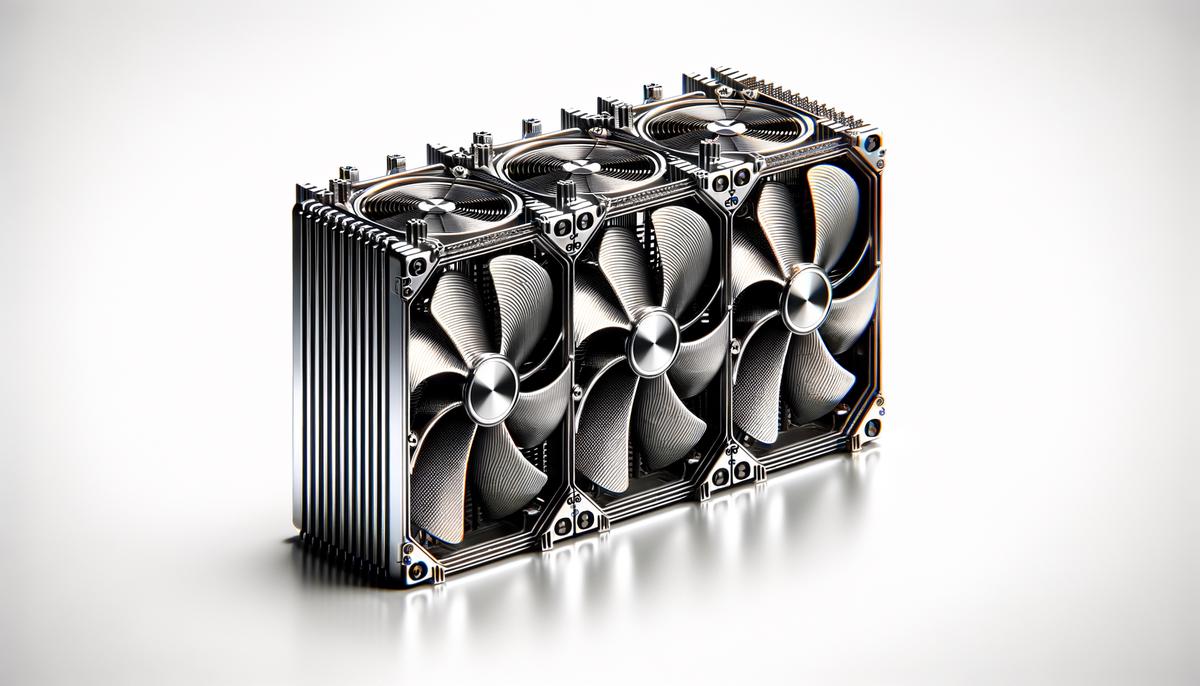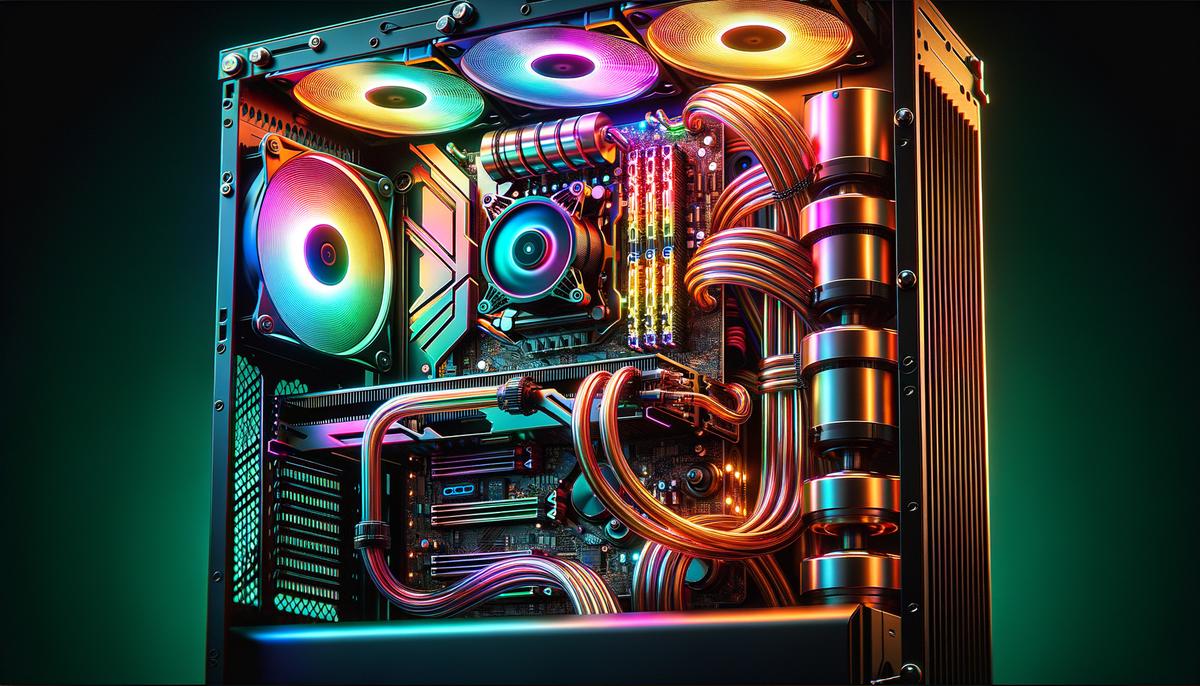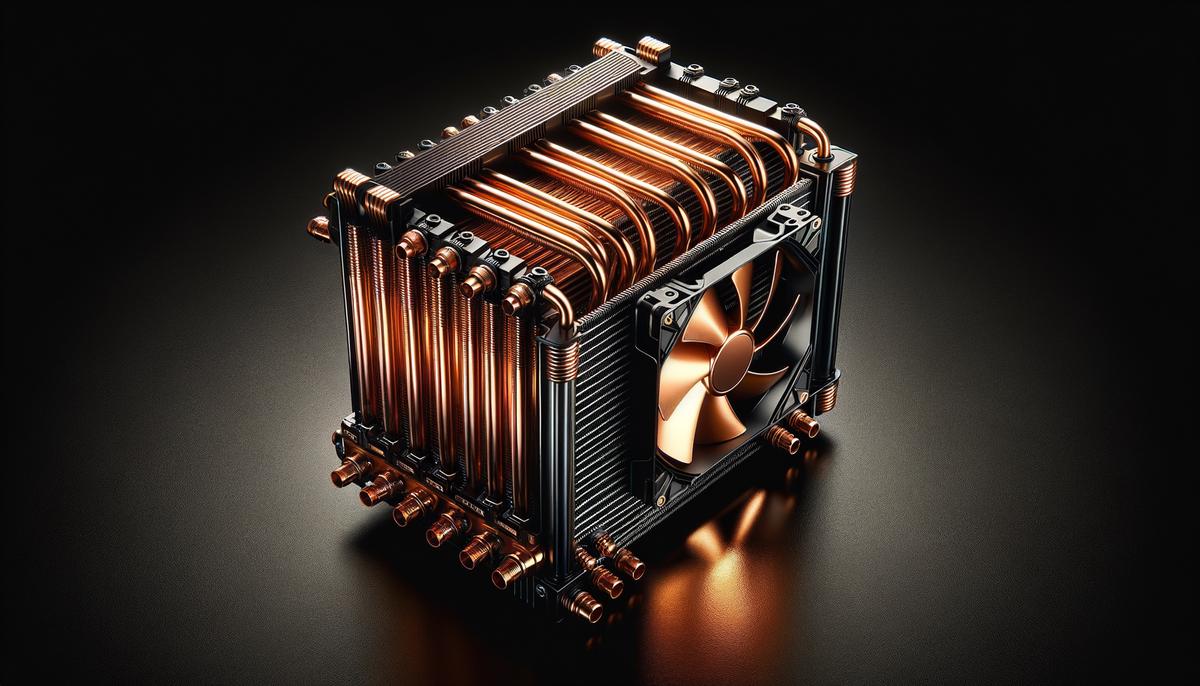When assembling or enhancing your PC, the selection of radiator material emerges as a pivotal decision impacting the system's cooling efficiency, durability, and performance. This discussion aims to shed light on the nuanced differences between copper and aluminum radiators, guiding you towards an informed choice that aligns with your computing needs.
Contents
Understanding Radiator Materials
When building or upgrading your PC, one critical choice you'll face is selecting the right radiator material for your cooling system. The material of your radiator can significantly impact its efficiency, durability, and overall performance. Let's break down the differences between the two most common materials: copper and aluminum.
Copper Radiators: The Efficient Choice
Copper has long been favored for its excellent thermal conductivity, which sits at about 400 watts per meter per Kelvin (W/mK)1. This high rate means copper radiators are capable of moving heat away from your CPU faster, keeping it cool under heavy usage. However, copper is heavier and usually more expensive than aluminum. It's also prone to oxidizing over time, requiring more maintenance to keep in optimal condition.
Aluminum Radiators: Lightweight and Cost-Effective
Aluminum radiators are lighter and more budget-friendly. While aluminum's thermal conductivity is lower than copper's, at about 237 W/mK2, it still does a commendable job at dissipating heat, especially in standard PC builds not pushed to their maximum limits. Aluminum is also less prone to corrosion, making it a durable, low-maintenance option.
The material of your radiator plays a pivotal role in the effectiveness of your PC's cooling system. High-performance builds, especially those involving overclocking or extended gaming sessions, demand efficient heat dispersal to prevent overheating. This is where copper shines, offering superior cooling capacity.
For more casual users or those with budget constraints, an aluminum radiator can still provide adequate cooling. It's also worth considering if you prioritize a lighter build, as every component's weight adds up, influencing the ease of transport and overall build weight.
Considering durability, aluminum radiators win by not reacting significantly with coolant, offering a longer lifespan with less maintenance. Copper radiators might require periodic checks to ensure there's no oxidation or reaction with other metals in your cooling system, which could limit its effectiveness over time.
Ultimately, your decision hinges on your specific needs and priorities. If you're building a high-end gaming PC or planning to push your system's limits, the higher cost of a copper radiator could be a worthwhile investment for its superior cooling performance. For everyday builds or those on a tighter budget, an aluminum radiator offers a practical balance between cost, efficiency, and durability.
By understanding the fundamental differences between copper and aluminum radiators, you're now equipped to make an informed decision that aligns with your performance expectations and budget constraints. The goal is to create a balanced system that delivers on your computing needs while ensuring longevity and efficiency.

Choosing the Right Cooling System
When deciding on the best cooling system for your PC's processor, airflow and cooling technology also play crucial roles alongside the material of the radiator. The choice between air coolers versus liquid (AIO) coolers is notable. Each type boasts benefits worth considering.
Air coolers, respected for their simplicity and effectiveness, rely significantly on ample case space. They draw air in directly around the CPU, dispersing heat away through large heatsinks. Owing to fewer moving parts, air coolers showcase admirable durability and are often more affordable. However, their efficacy can be contingent on internal case airflow and space, making it critical to ensure your case can accommodate these bulkier units.
AIO or liquid coolers offer a streamlined solution. They employ a water-pump-circulated coolant that absorbs CPU heat, transferring it to a radiator typically mounted on the case's periphery. This setup allows for direct heat removal from the processor and out of the case, aiding in maintaining lower temperatures even under load. The sleeker profile of AIO coolers also frees up space around the CPU, beneficial for accessing surrounding components or minimizing clutter.
When choosing between an air cooler and an AIO cooler, assess your priorities. If performance in a compact or clutter-free environment tops your list and the budget allows, an AIO cooler might be the way forward. If you're seeking reliability and cost-effectiveness with a setup that allows for it, an air cooler could be the right choice.
Understanding your hardware needs further assists in this decision. High-end processors known for generating substantial heat under load likely necessitate robust cooling solutions like high-capacity air coolers or AIO systems. Mid-range or entry-level CPUs with less aggressive heat profiles can thrive with more moderate cooling solutions.
Installation ease is another consideration worth attention. Generally, air coolers are more straightforward to install compared to AIO coolers. AIO systems, with their multiple components – the pump, tubing, and radiator – demand careful planning for mounting and routing within your case. However, many modern offerings include simplified mounting mechanisms to ease this process.
The environment where your PC operates shouldn't be overlooked. Hotter ambient temperatures may push the need for more potent cooling solutions to counteract external warmth effectively. Users in cooler climates or with particularly well-ventilated setups might find satisfactory performance from less robust systems.
Selecting the ideal cooling solution for your PC hinges on a balanced analysis of your system's needs, spatial considerations, performance aspirations, and budget constraints. With this approach, you can ensure a cool-running and efficient PC setup tailored just right for your computing adventures.

Optimizing Airflow for Radiators
Let's delve into the role airflow plays in radiator efficiency, simplifying the concept for easy understanding. Airflow is essentially the lifeblood of a PC's cooling system, especially when it comes to radiators, whether you're looking at an air cooler or an AIO system.
Think of a radiator like the lungs of your PC. Just as lungs need a steady stream of air to extract oxygen from the atmosphere, your radiator requires a consistent flow of air to dissipate heat from the coolant. The more efficiently air moves through the radiator's fins, the faster heat is evacuated from your system.
In basic terms, imagine you're fanning yourself on a hot day; the more vigorously you fan, the cooler you feel. Similarly, in a PC, fans push cool air across the radiator to lower the temperature of the liquid inside. The principle here is simple: move more air, and you'll cool more effectively.
However, there's a bit of a balancing act involved. If your case is crammed full of components, or if it's designed without good airflow in mind, air might not reach the important parts, including the radiator. Ensuring your PC case has enough space for air to circulate, thanks to strategically placed fans, is crucial for radiator efficiency. The goal is to create an environment where air can freely move in, around, and out of your cooling system and PC case.
Here's a quick hit-list for ensuring optimal airflow:
- Placement of Fans: Fans should be positioned to create a steady air path through the case. Generally, you want front and/or bottom fans drawing cool air in, with top and/or rear fans pushing warm air out.
- Cleanliness is Key: Dust buildups can choke your system, figuratively speaking. Keeping your PC and its fans clean ensures unobstructed airflow.
In extensive cooling setups, radiator fans play a dual role. On one side, they need to push or pull air through the radiator's fins. On the other, they must ensure this does not disrupt the overall airflow pattern inside the case. Mismanaged airflow can lead to hot spots in your system, diminishing efficiency.
Achieving a healthy airflow through and around your radiator is akin to finding the sweet spot. It's less about brute force and more about smart, strategic fan placement and system cleanliness. An efficiently cooled system ensures longevity of components and potentially better performance, crucial whether you're gaming, creating, or just browsing. Remember, a well-ventilated PC is a happy PC.
The material of your radiator significantly influences your PC's cooling efficiency and overall performance. Whether you lean towards the superior thermal conductivity of copper for high-demand scenarios or favor aluminum for its cost-effectiveness and lightweight nature in more standard builds, this choice shapes the backbone of a well-balanced cooling system. Selecting the right radiator material is not just about immediate needs but also about ensuring long-term satisfaction with your PC's performance.
- Null L. Material thermal properties database. Int J Thermophys. 2009;30(6):1545-1596.
- Davis JR, ed. Aluminum and Aluminum Alloys. Materials Park, OH: ASM International; 2001.



